#ancient eastern religions
Text
TIL from a podcast featuring historian and Byzantine archaeologist Yannis Theoharis:
Athens was one of the most religiously conservative cities of the Byzantine Empire. It adhered to the ancient Greek religion for longer than most other areas. Contrary to popular belief, its eventual conversion to Christianity did not happen violently. Christianity was getting more and more ground amongst the believers progressively. Meanwhile, the ancient temples and shrines were progressively emptying but as long as there were believers they were functioning properly and had guards and went through restoration works and all, as stated by Neoplatonic philosopher Proklos (with the exception of nude sculptures which had been destroyed already by proto-Christians). The historian also claims the conversion of the temples to churches happened later than what was previously believed, around the 7th-9th centuries. As the vast majority of the population had eventually converted to Christianity, the temples were left abandoned. The empire ordered their conversion to churches so that funding their preservation could be justified. Furthermore, there wasn’t as much of violent banning of ancient schools as it was thought. Justinian did not ban the function of the Neoplatonic school in Athens but ceased the state funding unless the school accepted to add Christian theology to its curriculum. The Neoplatonic school refused but it was not banned. It kept functioning using its own private funds until this wasn’t enough and the school had to close. Evidence for this is that it is documented that the school functioned for several decades or more than a century (don’t remember exactly) after Justinian’s imperial command, which was previously viewed as an immediate or violent shutdown. Meanwhile, the Neoplatonic school in Alexandria (in Egypt) agreed to add Christian theology to its curriculum and it kept functioning undisturbed until the 7th century and the Arab conquest.
Also, he has more insight into the similarities observed between Eastern / Greek and even all Orthodoxy and the Ancient Greek religion, such as idol / icon worship, lesser deity / saint worship, virgin female deity / super saint worship, patron gods / saints etc He says there was an interesting cycle of Christianised Hellenism followed by Hellenized Christianity. Some of these elements of Christian Orthodoxy were emphasized more than in the early years of Proto-Christianity or even exaggerated by the Byzantine Greek Christians in order to attract the pagan Greeks and make them understand more easily the philosophy of the new religion and find common ground between them. It worked.
Lastly, he disputed the dated assumptions that the Visigoth king Alaric I was assisted by monks to destroy Athens during his invasion in 396. This was falsely concluded because in documents it was found that Alaric was accompanied by men clad in black. Theoharis says these were actually Thracian soldiers (Alaric indeed fared long in Thrace and the Thracians were by large mercenaries) and supports it is very unlikely based on historical evidence of the time that Athenian or Greek Christians would collaborate with a Visigoth invader to help him destroy historical areas of Athens, even if they were pagan.
These are the most important bits from memory, I am linking the podcast here, it is in Greek.
#Greece#Europe#history#Greek history#Byzantine history#Christian orthodoxy#Ancient Greek religion#Greek orthodoxy#Eastern Orthodoxy#Byzantine empire#eastern Roman Empire#justinian#Alaric I#proklos#neoplatonism#Athens#attica#central Greece#Sterea Hellas#mainland
85 notes
·
View notes
Text

The Hijab did not originate from Islam nor are they oppressive when women have the freedom to choose when they wear one.
🧕🏼☪️🧕🏾
#history#hijab#islam#mesopotamia#veil#middle eastern history#ancient#medieval#islamic golden age#clothing#womens history#fashion#femininity#traditional clothing#muslim women#islamic practice#religion#middle east#soft girl#hijab fashion#islamic history#assyrian#traditional femininity#sumerian#womenswear#fashion history#nickys facts
33 notes
·
View notes
Text
Chakras - What they really are

(I managed to salvage this post written by @rue-cimon from an old deactivated account. I copied it down here because this was too good a post to lose.)
Chakra literally means "wheel" or "circle" in Sanskrit. The concept of chakras originates from Hinduism in ancient India. These are focal points used in a variety of ancient meditation or yoga practices. These practices are collectively called "tantra".
Although the concept is frequently found in early traditions of Hinduism and are often mentioned in the Vedas, beliefs around chakras differ between various Indian religions. Buddhist texts consistently mention 5 chakras, whereas Hindu texts and sources speak of 6 or 7 chakras.
Early Sanskrit texts speak of them both as meditative visualizations combining flowers and mantras and as physical entities in the body. Within kundalini yoga, various breath exercises, visualizations, mudras, kriyas, and mantras are focused on manipulating the flow of subtle energy through chakras.
Chakras are also present in Ayurvedic traditions.
The belief behind chakras is that human life simultaneously exists in two parallel dimensions, one is the physical body and the other is psychological, emotional, mind, non physical (the subtle body).
The aforementioned subtle body is energy, while the physical body is mass. The psyche or mind plane corresponds to and interacts with the body plane, and the belief holds that the body and the mind mutually affect each other. The subtle body consists of energy channels connected by nodes of psychic energy called chakras.
The chakras - in Hindu and Buddhist texts - are said to be arranged in a column along the spinal cord, from its base to the top of the head, connected by vertical channels. Tantric traditions strive to awaken, master, and energize these chakras through yoga and often with the help of a teacher.
The esoteric traditions in Buddhism generally teach four chakras. In some early Buddhist sources, these chakras are termed as manipura (navel), anahata (heart), vishuddha (throat), and ushnisha kamala (crown). However, a system of five chakras is common among classes of tantra in Tibetan Buddhism. These five chakras are basal, abdominal, heart, throat, and crown, and each chakra corresponds with an element, a Buddha, and a bija mantra.
The more common and most studied chakra system incorporates six major chakras along with a seventh center generally not regarded as a chakra.
The chakras are traditionally considered meditation aids. The yogi starts from lower chakras and progresses to the highest chakra located in the crown of the head, in the journey of spiritual ascent.
In the Hindu kundalini and Buddhist candali traditions, the chakras are pierced by a dormant energy residing near or in the lowest chakra. in Hindu texts she is known as Kundalini, while in Buddhist texts she is called Candali or Tummo.
Some terms and definitions:
Tantra: Esoteric traditions in Hinduism and Buddhism that developed in India mainly during the middle of the 1st millennium CE. The term tantra, in the Indian traditions, also means text, theory, system, method, instrument, technique, or practice. A key feature of these traditions is the use of mantras.
Kundalini yoga: A type of yoga focused on channeling energy through the chakras.
Mudra: A symbolic or ritual gesture or pose in Hinduism, Jainism, and Buddhism. Mudras have meaning in many forms of Indian dance and yoga. In hatha yoga, mudras are used in conjunction with pranayama (yogic breathing exercises), generally while in a seated posture, to stimulate different parts of the body involved with breathing and to affect the flow of prana and is associated with consciousness in the body. Mudras are also used in tantric practices.
Kriya: Practice within a yoga discipline meant to achieve a specific result. The Yoga Sutra of Patanjali defines three types of kriya, namely asceticism, study, and devotion. Such yoga is called kriya yoga. Kriya is a Sanskrit word that literally means "to do" or "to work".
Mantra: A sacred utterance, a sound, a syllable, word, or phonemes, or group of words in Sanskrit, Pali, and other languages. They hold spiritual and religious significance. At its simplest, the word "om" serves as a mantra. It is believed to be the first sound which was originated on earth. It creates a reverberation in the body which helps the body and mind to be calm. In more sophisticated forms, mantras are melodic phrases with spiritual interpretations such as a human longing for truth, reality, light, immortality, peace, love, knowledge, and action. Not all mantras have literal meanings but rather are simply uplifting.
Ayurveda: An alternative medicine system with historical roots in ancient India.
#chakras#hinduism#buddhism#witches of color#asian religions#eastern spirituality#ancient india#asian witches#buddhist witches
268 notes
·
View notes
Text
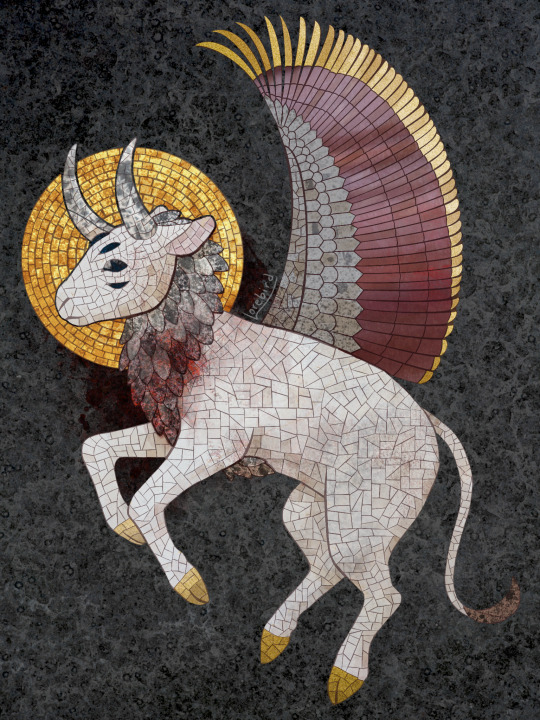
A piece I did for school! In my art history class, we had to make a work covering one of the themes we’ve been discussing so far — I chose depictions of divinity and power
#MY GOD. NEVER LET ME DO A MOSAIC AGAIN. KILL ME#my art#religion#a couple of things I pulled from for the design —#bulls in ancient Minoan art; lions in ancient near eastern art; falcons in ancient egyptian art; lambs in ancient christian art#(with a bit of revalations imagery thrown in for fun bc. I like multiple eyes)#and then making it a mosaic based on byzantine mosaics. not necessarily tied to power/divinity just looks cool
18 notes
·
View notes
Text
Inanna, known as the Queen of Heaven, is the Sumerian goddess of love, sex, beauty, fertility, war, power, and divine justice. The Akkadians, Babylonians, and Assyrians called her Ishtar. She was the patron goddess of the Eanna temple of the Sumerian city of Uruk.
Her symbols were the lion, the owl, the eight-pointed star, and the hamsa. Women used to wear hamsas to increase fertility and ensure healthy pregnancies. She was also associated with the planet Venus.

#inanna#mesopotamian art#mesopotamian mythology#mesopotamia#mesopotamian religion#sumerian#ancient sumeria#hamsa#ancient near east#ancient gods#middle eastern history#queen of heaven#uruk
12 notes
·
View notes
Text

#art#isis#egyptian#egyptian mythology#isis goddess#ancient egypt#ancient history#religion#religious#religious art#middle east#middle eastern history
18 notes
·
View notes
Text
zombie essay is taking me to some weird places. i'm out here defending the ancient kandarian demon summoning book
#its for a larger argument that (hopefully) makes sense in context#the ev!/ dead came out at the birth of the satanic panic -> the panic demonized minority religious groups -> ev!/ dead also does that#by not examining why these ancient people might have used a demon summoning spell and by making the book scary etc etc#(sorry for censors hope its still legible. i dont want this to show up in tags and start discourse)#and i dont think its a coincidence that they chose a middle eastern origin for their ancient dark magic either!#therefore the movie upholds popular beliefs surrounding minority religions that would go on to spread throughout the 80s#but like. ultimately yeah i Am sitting here saying 'why dont we give the literal demon worshippers a chance'#sometimes as a humanities major im a parody of myself#levi.txt#am i saying the movie is inherently racist/xenophobic/etc and should be hated for that? not necessarily!#i actually like this series a lot! its goofy and fun#but i DO think its notable and interesting that it speaks to its contemporary moral panic in such specific ways#i wish i had space to also get into the second movie tho bc i find it FASCINATING that it chose to parody itself#right around the time its audience started questioning the panic and became absurd around the time it ended#like. the second film was released the SAME year the mcmartin trials started ending#by 1992 the third film was out and it was utter nonsense (affectionate) and the panic was largely dead in the water#i have a theory that the og trilogy KNOWS as a series that its identity is tied to that cultural moment. and that fucking rocks
0 notes
Text


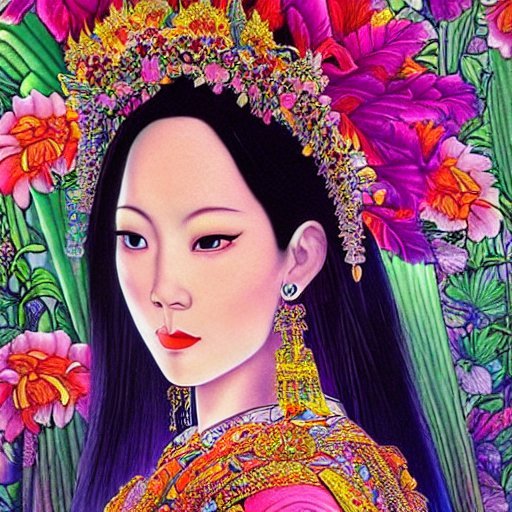



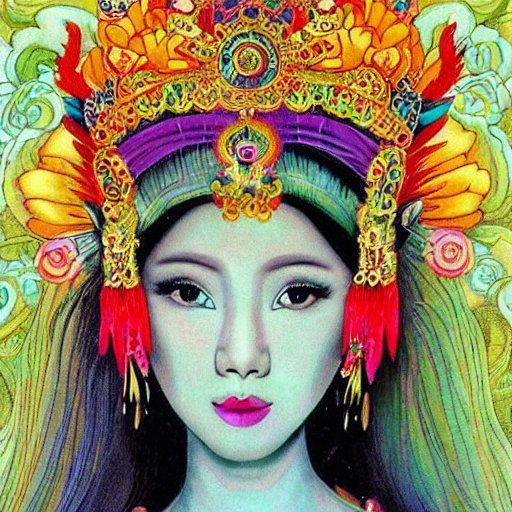



#buddhist art#ancient legends#ancient history#concept art#ancient religion#esoteric#eastern religion#southeast asian buddhism#southeast asian folklore#southeast asian mythology#southeast asian art#southeast asian legends#southeast asia#southeast asian religion#spiritual enlightment#spiritual awakening
0 notes
Text
something i think gentiles do not get abt judaism is that it’s not a religion in the modern sense. rabbinic judaism as we know it today exists because of the roman destruction of judea and subsequent genocide and expulsion of a huge number of the judeans living there. prior to that, there were judeans who lived outside judea and still participated in many judean practices and followed many judean laws. there was a conversation happening particularly in the rabbinic movement (which was an incredibly small and fringy movement btw) about how to maintain a cohesive identity and community with members of an ethnic group that had stayed in babylon after being released from slavery or had moved to the italian peninsula or to egypt, and that identity was beginning to form. jewish identity was becoming something we might recognize today.
but prior to the roman expulsion and destruction of the temple, that identity had been centered around the land and the temple for very obvious reasons. ancient israel, judea, it was a place and the people who lived there lived under the same governance with the same culture and the same language. it makes sense they’d be a unique ethnic group. another huge part of the identity they’d formed was opposition to occupying forces, greeks, babylonians, assyrians, and finally the romans. eretz yisrael was constantly under occupation. and rebellion was a unifying force for these people. so when suddenly they have no land to defend, no central temple to look toward, suddenly the rabbis’ outlook on “portable judaism” was pretty much the only option if they wanted to remain a coherent group. they started communicating with each other over thousands of miles and multiple continents, discussing how to maintain their identity while in exile. and that is how judaism formed. it wasn’t a belief system that was spread throughout the world like christianity. it was a group of people whose population and homeland was devastated by a brutal occupying force who were trying to hold on to the only thing they had in strange lands where people weren’t always very welcoming: community. particularly in places like eastern and central europe where jews physically looked so different than the rest of the population, their culture was so different, and europeans reacted very violently to that, holding onto their traditions and immersing themselves in the study of how to stay connected is the reason those communities still exist today. they could have just moved to a new place and assimilated into the populations there and we would not have jews today. the reason we have jews today is because of that communal decision, across continents, to stay connected.
462 notes
·
View notes
Text
[Hanfu · 漢服]Chinese immortal Hanfu <西王母/Queen Mother of the West> Based On Yuan Dynasty Taoist Temple Mural<永乐宫/Yongle Palace>
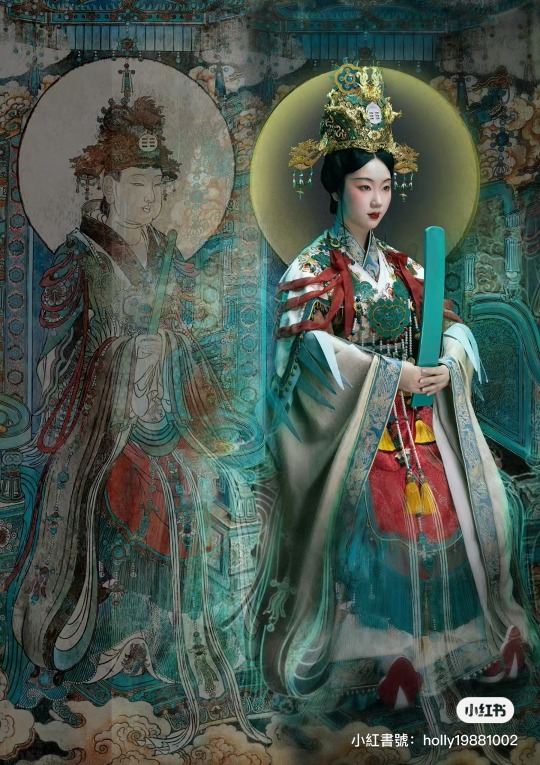
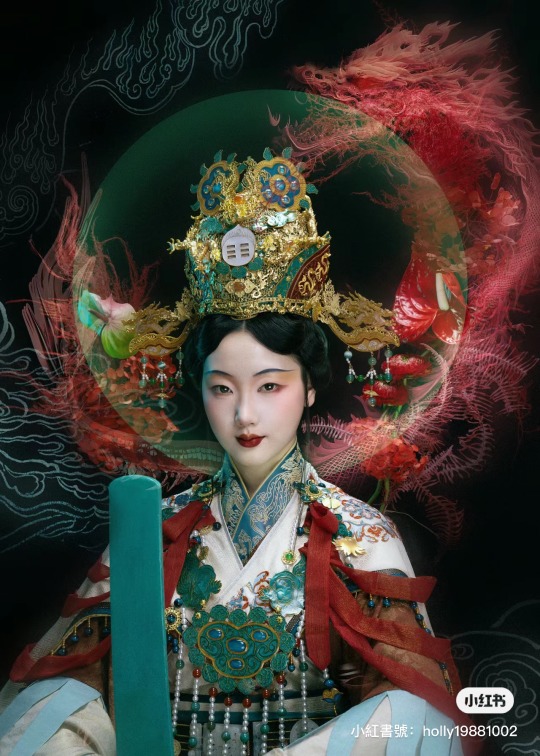
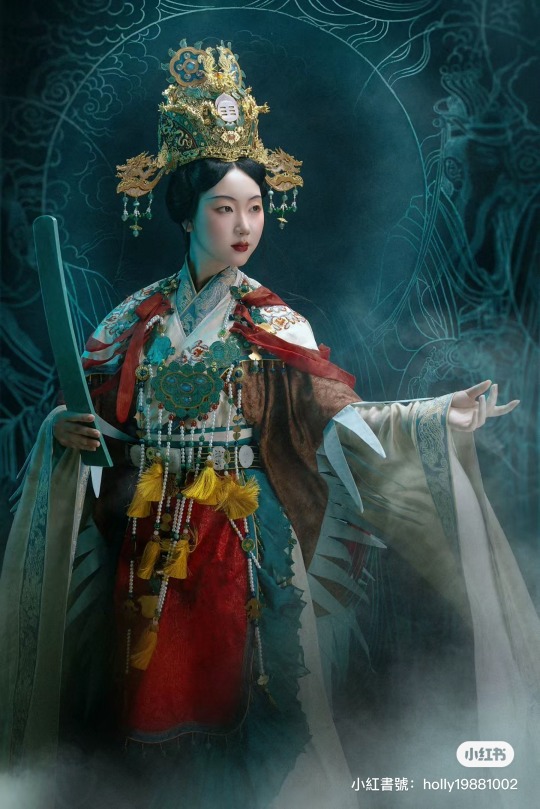
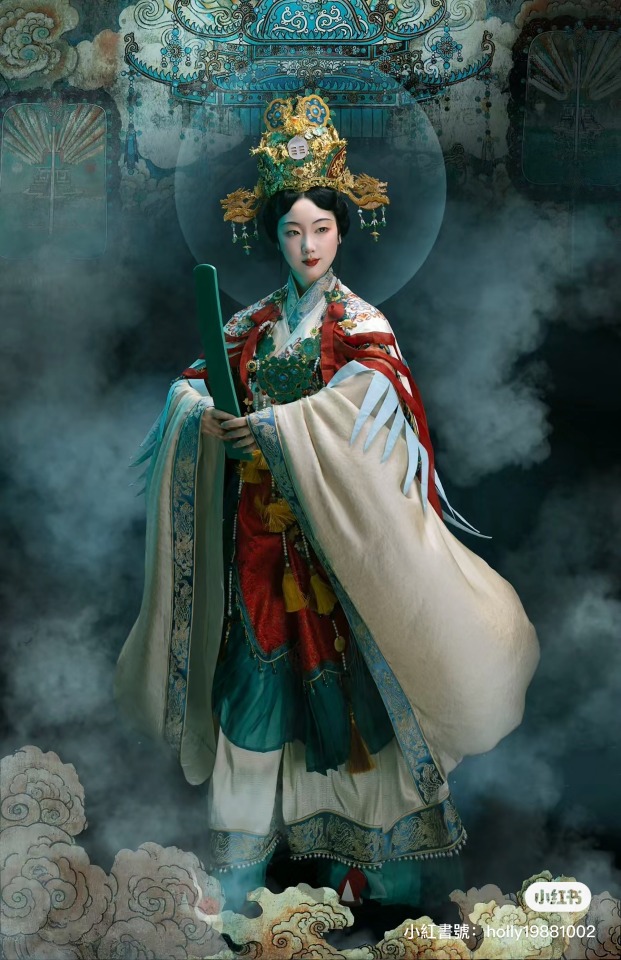
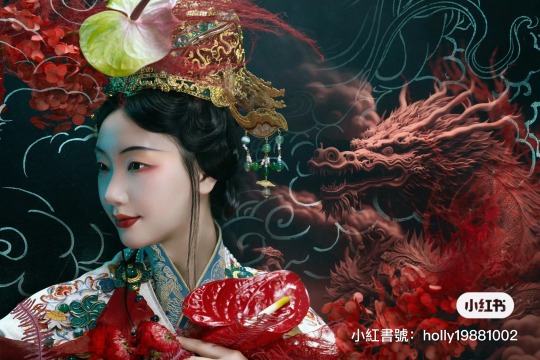
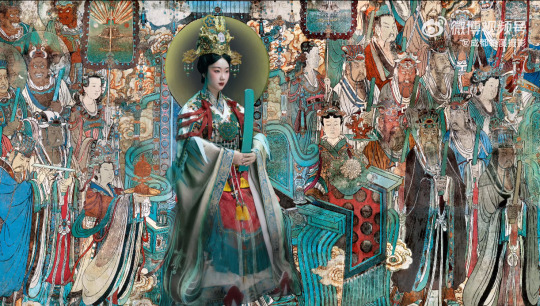
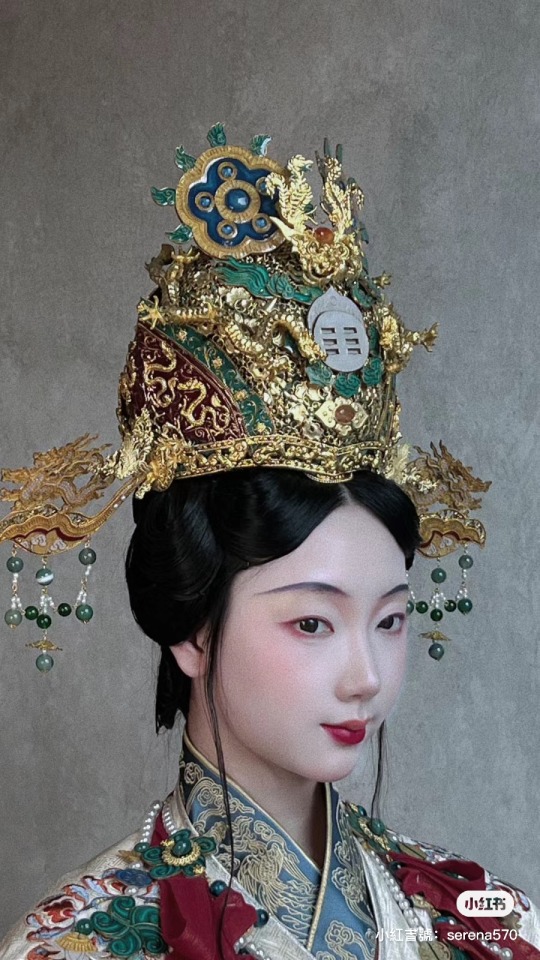
【Historical Artifacts Reference 】:
▶ China Yuan Dynasty Taoist Temple 永乐宫/Yongle Palace Mural


<西王母/Queen Mother of the West>
The Queen Mother of the West, known by various local names, is a mother goddess in Chinese religion and mythology, also worshipped in neighbouring Asian countries, and attested from ancient times.
The first mentions of the Queen Mother date back to the oracle bone inscriptions of the Shang dynasty (1766 – 1122 BCE).
One inscription reads:
Crack-making on day IX (9th day), we divined. If we make offering to the eastern mother and the western mother, there will be approval.
Western Mother refers to an archaic divinity residing in the west. The exact nature of the Mother divinities in the Shang dynasty is unclear, but they were seen as powerful forces deserving of ritual by the people of the Shang dynasty.
Originally, from the earliest known depictions of her in accounts like the Classic of Mountains and Seas during the Zhou dynasty, she was a ferocious goddess of death with the teeth of a tiger, who rules over wild beasts and sends down heavenly punishments such as pestilences. She was also mentioned as an authority ruling over other divinities such as Jiutian Xuannü, a goddess of war and sex.
Other stories hold that she is a mountain goddess or a divine tigress. She is also popularly thought to have blessed the Eight Immortals with their supernatural abilities.
After her integration into the Taoist pantheon, she gradually took on associations with other aspects, such as immortality, as well.
The Queen Mother of the West is most often depicted holding court within her palace on the mythological Mount Kunlun, usually supposed to be in western China (a modern Mount Kunlun is named after this). Her palace is believed to be a perfect and complete paradise, where it was used as a meeting place for the deities and a cosmic pillar where communications between deities and humans were possible.At her palace she was surrounded by a female retinue of prominent goddesses and spiritual attendants. One of her symbols is the Big Dipper.
Although not definite there are many beliefs that her garden had a special orchard of longevity peaches which would ripen once every three thousand years,others believe though that her court on Mount Kunlun was nearby to the orchard of the Peaches of Immortality. No matter where the peaches were located, the Queen Mother of the West is widely known for serving peaches to her guests, which would then make them immortal. She normally wears a distinctive headdress with the Peaches of Immortality suspended from it.
Flourishing parasols, we reach the chronograms' extremity;
Riding on the mist, I wander to Lofty Whirlwind Peak.
The Lady of the Supreme Primordial descends through jade interior doors;
The Queen Mother opens her Blue-gem Palace.
Celestial people—What a Crowd!
A lofty meeting inside the Cyan Audience Hall.
Arrayed Attendants perform Cloud Songs;
Realized intonations fill the Grand Empty Space.
Every thousand years, her purple crabapple ripens;
Every four kalpas, her numinous melon produces abundantly.
This music differs from that at the feast in the wilderness—
So convivial, and certainly infinite.— Wu Yun (Complete Tang Poems 1967, line 4942)
One of the earliest written references to the Queen Mother comes from the writings of the Taoist writer Zhuangzi (c. 4th century BCE):
The Queen Mother of the West obtained it [the Dao]... ...and took up her seat at Shao kuang. No one knows her beginning; no one knows her end.
Zhuangzi describes the Queen Mother as one of the highest of the deities, meaning she had gained immortality and celestial powers. Zhuangzi also states that Xiwangmu is seated upon a spiritual western mountain range, suggesting she is connected to not only the heavens, but also to the west.
Legendary encounters
In Tu Kuang-ting's text, he includes narrative accounts of the Queen Mother's encounters with legendary Chinese heroes. One such account narrates an encounter between the Queen Mother and Laozi (Lord Lao):
"In the 25th year of King Chao of the Chou dynasty (1028 BCE) …"
"…Lord Lao and the realized person Yin Hsi went traveling…"
"…on their behalf, the Queen Mother of the West explicated the Scripture of Constant Purity and Quiet."
In this account, the Queen Mother plays the role of Laozi's superior and is credited with the ultimate authorship of the Dao De Jing. This dichotomy of the Queen Mother as the superior is a characteristic of Shangqing Taoism, a goddess worshiping sect of Taoism of which Tu Kuang-ting was a master. There is also an account of a meeting between the Queen Mother and Laozi in Tang poetry.[18] This account however, being of traditional Taoist thought, has the Queen Mother taking an inferior role to Laozi, calling him "Primordial Lord" (the title of his highest manifestation) and pays homage to the sage.

<China Han Dynasty stone-relief showing 西王母/Queen Mother of the West from Sichuan,China>

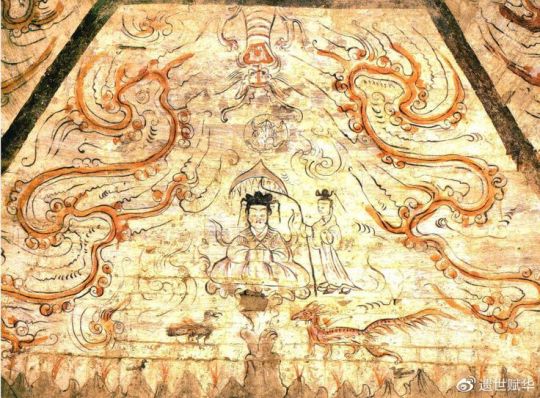
<China Wei and Jin Dynasties Mural showing 西王母/Queen Mother of the West>
————————
📸Photography post-production :@小何力
👗Hanfu & 👑Crown:@雁鸿Aimee
💄 Makeup:百丽 (临溪摄影)
👭Model:@清音音音音
🔗 Weibo:https://weibo.com/1648616372/O2R5bpBud
————————
#chinese hanfu#immortal hanfu#西王母/Queen Mother of the West#Chinese mythology#hanfu#hanfu accessories#hanfu_challenge#chinese traditional clothing#china#chinese#chinese history#china history#漢服#汉服#中華風#小何力#雁鸿Aimee#永乐宫/Yongle Palace
228 notes
·
View notes
Note
I know a lot of YouTube channels about Western and Islamic religion and esoterica thanks to your reccs, quite a few about Eastern stuff, do you know any trustworthy channels about Native American and New World religion and belief? I find there's a drought of reliable sources on that outside very specific papers and books. I can recommend Ancient Americas 100% but his focus is on history, I want more about mythology and belief.
Ah, unfortunately I don't. It's pretty tough to find good, accessible, pop-history about native American religion.
168 notes
·
View notes
Text
Time Travel Question 16: Ancient History VII and Earlier
These Questions are the result of suggestions from the previous iteration.
This category may include suggestions made too late to fall into the correct grouping.
Please add new suggestions below if you have them for future consideration.
I am particularly in need of more specific non-European suggestions in particular, but all suggestions are welcome.
#Time Travel#Morocco#Phoenicia#The Mediterranean#The Xia Dynasty#Pompeii#Domestication#Agricultural Revolution#Finish history
317 notes
·
View notes
Text
Also, the religions of my native land have been doing just fine for thousands of years with our own gods and goddesses, thank you very much.
#witches of color#religions#deities#world religions#asian religions#ancient religions#polytheism#eastern spiritualities
39 notes
·
View notes
Photo
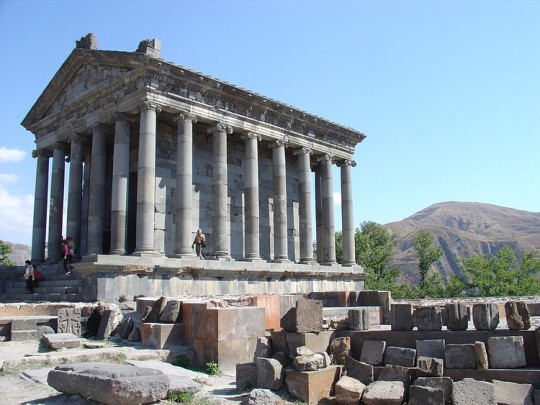
Ancient Armenia
Ancient Armenia, located in the south Caucasus area of Eurasia, was settled in the Neolithic era but its first recorded state proper was the kingdom of Urartu from the 9th century BCE. Incorporated into the Persian Empire of Cyrus the Great in the 6th century BCE, the Orontid dynasty ruled as Persian satraps, a function they performed for their next overlords the Macedonians and Seleucid Empire into the 3rd century BCE. Under the Artaxiad and Arsacid dynasties the country flourished but was often caught between the ambitions of Parthia and Rome, and then the Sasanian and Byzantine Empires. The boundaries of the state varied considerably over the centuries but such common factors as religion and language were united by long-lasting dynastic clans, which gave Armenia its own unique identity throughout antiquity.
Hayasa-Azzi (1500-1200 BCE)
The first identifiable culture in the region is the Hayasa-Azzi, an indigenous tribal confederation which flourished on the fertile plateau of ancient Armenia around Mount Ararat and parts of modern-day eastern Turkey between c. 1500 and c. 1200 BCE. The Hayasa-Azzi are the eponym of the Hay people, the term Armenians use to describe themselves and their state, Hayastan. Over time, the Hayasa-Azzi mixed with other ethnic groups and local tribes such as the Hurrians, Arme-Shupria, and Nairi, probably motivated by the need for defence against more aggressive and powerful neighbours like the Hittites and the Assyrians. They were probably infiltrated by the Thraco-Phrygians following the collapse of the Hittite Empire c. 1200 BCE. Eventually, these various peoples and kingdoms would be fused into the region's first recognisable and recorded state, the kingdom of Urartu from the 9th century BCE.
Continue reading...
88 notes
·
View notes
Text
Enki, patron of the southern Mesopotamian city of Eridu, is the Sumerian god of crafts, creation, water, fertility, magic, intelligence, and mischief, and keeper of the divine powers called mes, the gifts of civilization.
Akkadians called him Ea or Ae. Canaanites called him Ia. His main temple was by the Persian Gulf coastline of Eridu. His symbols were the fish, the goat, the sea-goat, & the chimera. He was associated with the planet Mercury.
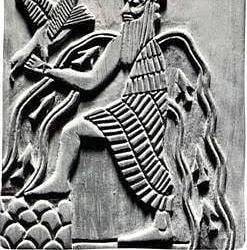
#ancient gods#mesopotamia#mesopotamian religion#mesopotamian mythology#mesopotamian art#sumerian#ancient sumeria#ancient near east#near east#middle east#middle eastern history
10 notes
·
View notes
Note
i just watched someone saying "christianity is and always will be the cultural appropriation of religions" and they mentioned the resurrection, which surprises me a little. do you know what they could be referring to? they also called it a very common trope and i'm no theologian, don't know that much about other religions or mythology, so maybe you could help?
resurrection narratives are absolutely not unique to christianity. there are resurrection narratives in the religion of ancient egypt (osiris), greece (adonis, zagreus, dionysus, and attus), and sumer (dumuzid and inanna). all of these predate christianity by centuries. to consider resurrection myths appropriation is, however, rather ignorant: the mythologies of the ancient near east are absolutely woven together, to the point where they are almost indistinguishable from each other, especially in the early history of the hebrews. the roman empire was heavily influenced by hellenic culture, religion, and philosophy. consider dionysus, the god of wine: plutarch stated that the stories of osiris and dionysus were identical and that the secret rituals asociated with them were obviously paralleled: the second century AD saw the emergence of greco-egyptian pantheons where the god serapis was synonymous with osiris, hades, and dionysus. this is also similar to the interrelationship between inanna, ishtar, asherah, astarte, and multiple other near eastern female deities (and she likely played an influence in the development of lilith as well). how much did the cult of dionysus influence later rites of the wine and the eucharist in early christianity, especially given that within fifty years of christ's death most christians were greeks? romulus and remus were said to have been born to a virgin, and so was the founder of zoroastrianism, zoroaster, a religion that influenced platonic philosophy and all abrahamic faiths.
christianity is more guilty of appropriation that most other faith practices of appropriation because of the crudeness and hatefulness with which it borrowed judaism and then turned on the jews. but attempting to divide western and near eastern religious traditions into pure (original) and impure (appropriated) is next to impossible. otherwise we can start trying to particularize everything as either pure or impure and discard what we deem as "impure" or unoriginal because we think it is valueless, hackneyed, or unethical. religion does not work like that. christianity does require critical consumption and practice because it has both appropriated judaism and because the way in which it exerted itself as a dominant religion over other faith practices. and the appropriation of judaism must be especially viewed as troubling, because judaism cannot be compared, historically, to religions like those of ancient egypt and greece because until the state of israel it was never a dominant or state religion, and the fact that it survived some odd thousand years without being recognized as a state religion is part of why it's particularly interesting. of course, that has changed now, but this ask isn't about israel/palestine and i won't dwell on it this issue much except to reaffirm that christianity appropriating an oppressed minority religion that emerged out of colonial contexts is very different than christianity utilizing aspects of ancient greek religion or zoroastrianism, and also different from jesus being included in islam, for instance.
interestingly, quetzalcoatl, from the ancient aztec religion, was the patron of priests and a symbol of resurrection. this gestures to the hidden sacred, eliade's hierophany: the hidden holiness, the sacrality and beingness of something beyond ourselves, that underlies all existence, with its own explicit truths that emerge consistently in faith practices that, unlike those of the near east, never interacted. maybe we all carried the same stories out of the cradle of civilization; maybe there is a perpetual and accessible truth that transcends boundaries. i don't know. but everything is borrowed. everything is copy. humanity is not capable of true originality: and isn't that beautiful? everything is taken in communion. everyone is interconnected. everyone wants to believe something, and we seem to be universally compelled by the same truths, motifs, meanings, and stories.
70 notes
·
View notes